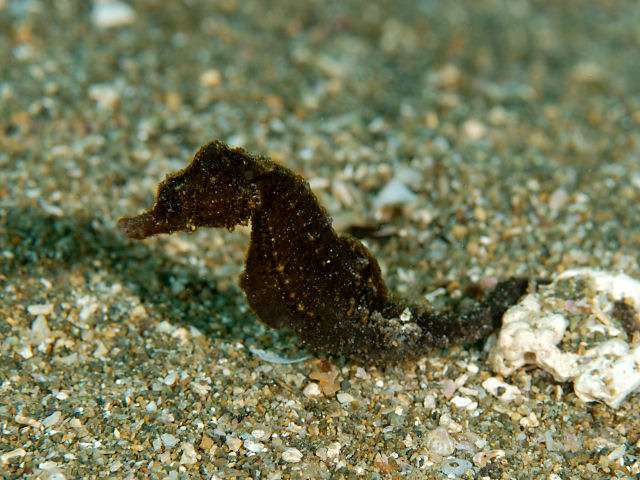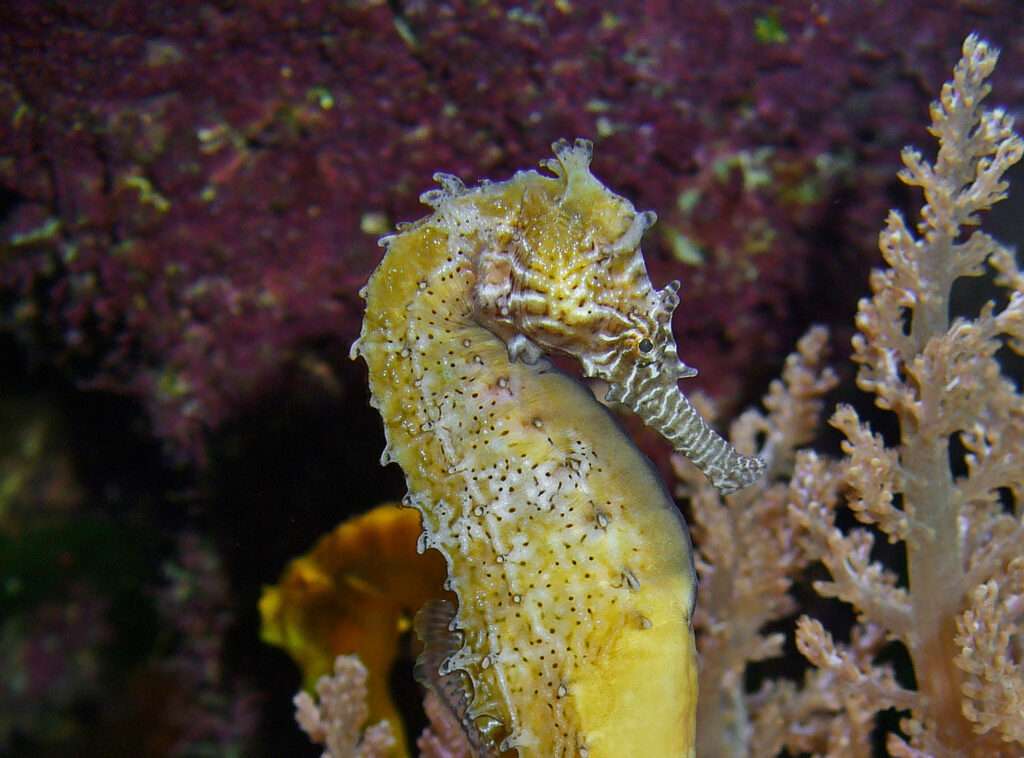
The lemur-tail seahorse (Hippocampus mohnikei), also known as the Japanese seahorse (kitano-umi-uma and sangotatsu in Japanese), is a species of fish. The Japanese seahorse has flattened spines, a coronet that resembles a ridge, a rather long tail, and a maximum length of 8.0 cm. Its color is often dark brown. Individual specimens are recognized using a set of precise measurements and counts of anatomical elements like spines and tail rings in addition to any identifying characteristics because many seahorse species have a similar appearance.
H. mohnikei goes through a planktonic stage during the first six months of its existence before settling and starting to reproduce, ideally in estuaries or beds of Zostera seagrass. As ovoviviparous creatures, the males stow the eggs in a brood pouch. Traditional Chinese medicine makes use of a number of seahorse species, however H. mohnikei is not one of them.
Distribution
Around 28 N latitude is where the distribution center of H. mohnikei is located. The sole confirmed dissemination for many years was in and around Japan. Recently, it was spotted farther south, along the Palk Bay coast of southeast India. Positive results have also lately been seen in Kampot, Cambodia. It may possibly be in the waters off China, Thailand, and Vietnam, according to speculation.

Feeding
When they are between 15.1-45.5 mm in length throughout the first six months of existence, they go through a planktonic stage during which they float in the water column with other plankton. As they get bigger, they start to favour larger food species instead of smaller ones like Oithona davisae and Penilia avirostris. They prefer to reside in estuaries and beds of Zostera Seagrass after leaving the planktonic stage.
Appearance
H. mohnikei grows to a maximum length of 8.0 cm and is often uniformly dark brown; however, it can occasionally be speckled. H. mohnikei has a short, ridge-like crest on its coronet. It has short spines and a body that looks to be flattened laterally. It has double-rounded spines on its cheeks and below its eyes. Compared to its body, its tail is long. The 4th, 7th, and occasionally the first trunk rings, as well as the 5th, 10th, 14th, and occasionally the 9th tail rings, have a modest enlargement.
There are numerous species of seahorses. Specific measures and counts are employed to reduce the possibilities if it is not immediately apparent.
Growth and development
Even as youngsters 6.0 mm long, H. mohnikei have fully developed dorsal, anal, and pectoral fins. Additionally, juveniles with a total length of 6.0–26.4 mm have a small caudal fin with only two rays. H. mohnikei can grow as long as 80 mm and reach maturity at 55 mm. At six to a year after birth, they begin breeding in the season. It is ovoviviparous, H. mohnikei. The male in a brood pouch under the tail carries the eggs.
Table





